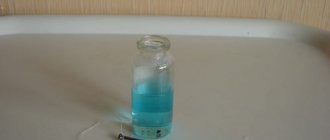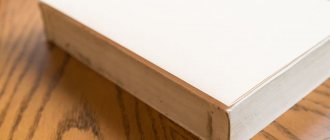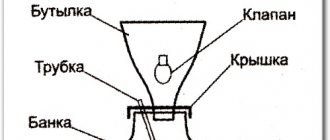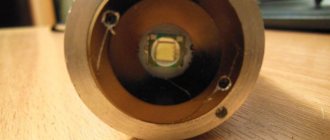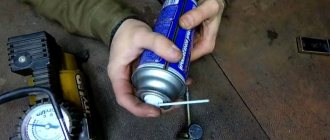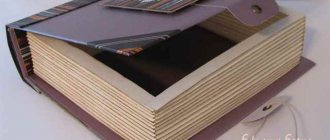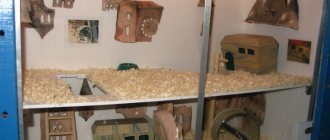The process of preparing activated carbon at home
Activated carbon in tablets
Activated carbon is permeated with micropores and is similar in structure to a sponge that absorbs molecules of organic and inorganic substances. The product is used to treat intoxications, filter liquids and purify air masses, in cosmetology, and in the garden. Activated carbon absorbs substances more strongly than usual.
Why create activated carbon at home?
The need to make activated carbon at home is caused by the wide range of consumption of the product. The traditional method of use is to purify moonshine from fusel fractions. Carbon filler is required in filters for purifying drinking water, water in aquariums, and in home hydroponics.
The air is purified by activated carbon from excess humidity, odors, and pollutants. In the garden, the substance is applied to the ground along with fertilizers and dug into the soil to protect the seedlings. Coal draws excess moisture from the soil and protects the roots of garden crops from rotting and mold development. Cosmetic cleansing of oily skin, masks, gels are another area of application of the absorbent.
The use of a universal absorber in the garden, everyday life, and cosmetology requires large quantities of the drug. Increases consumption and the need for periodic replacement of carbon filler in filters.
Important! Commercial carbon filters contain chemicals that are used to activate carbon masses on an industrial scale. Filters should be used strictly according to the instructions, otherwise the chemicals will add harmful effects to the water being purified.
Raw materials for making coal
Activated carbon can be prepared from various raw materials: wood, nut shells, animal bones (purchased from slaughterhouses), coal, and oil products.
Charcoal
Coal, which is suitable for further transformation into activated coal, is obtained from trees with dense and non-resinous wood - group A. These are birch, ash, beech (belongs to valuable tree species, not used for producing coal), elm, maple, oak. The use of wood from fruit trees and shrubs is allowed.
The wood is cleared of bark, core, and areas of rot that reduce the density and porosity of the final product. Reduce the yield of the future absorber by increasing the amount of ash.
coconut shell
Coconut palms are tropical flora. Palm fruits are called nuts because of their hard shell. After extracting the nutritious pulp (juice), the shells are used by local residents to make primitive utensils and in the construction of dwellings.
Excess shells are sold to rope and coal manufacturers. Coconut shells are very dense, so the charcoal is extremely porous. It is considered the best of activated carbons.
Manufacturing methods
In industrial production, the drug is obtained by chemical and physical methods. At home, it is realistic to use only the physical method.
Physical method
The physical method includes three stages:
- Obtaining a coal substrate with a low oxygen supply (imitation of industrial pyrolysis).
- Activation of charcoal with water steam.
- Drying.
They take finely chopped wood raw materials (chips of 2–3 cm), without bark, core and without areas of rot.
Wood raw materials are slowly burned. They use a tin can (for example, a coffee can), a cast pan, a frying pan, a fire or a pit.
Operating principle: the container must be closed from above to limit the access of oxygen to the burned raw material. A layer of sand is poured onto the pit or fire. In the tin can, holes are made only at the bottom (to allow flammable gases to escape).
Trees of various species
Coal fuel (for example, for barbecue) is obtained from any trees and shrubs. Firewood with remaining bark, areas of rot, and shavings will be used.
If the goal is to create activated carbon, only hard wood is used as a raw material. The second condition is the absence of resins (in large quantities). Suitable options are beech or oak, but valuable trees are not usually used for charring. The traditional raw material for activated carbon is birch.
Algorithm of actions
To obtain a high-quality product, the technological cycle is carefully followed.
Dry distillation of raw materials
Wood raw materials are burned on a gas stove. A fire is used outdoors, and a stove is used in a village house. In a city apartment, a blowtorch will help.
If you can start a fire, the tin can method will do. Dry crushed wood is placed in a tin can, low and wide. Drill several (10–15) holes in the bottom of the jar through which flammable gases and smoke will escape.
The gases will burn in an open flame - the risk of accidental carbon monoxide poisoning is negligible. The top of the tin has no holes. Air does not enter the jar, and the raw materials are charred evenly. When the chips have burned out completely, turn off the heat under the tin and let it cool.
Carbon activation
The next stage is the activation of the resulting product, or opening of the pores. At home, either steam or immersion in boiling water is used for activation. The latter method washes away the carbon soot - the absorption capacity of the future product is reduced.
More often they use water steam - they hold a coal substrate over it. Take a tall pan, fill it halfway and wait for the water to boil. The semi-finished product is wrapped in gauze and suspended in a pan above the water level - in a cloud of steam. The lid is closed. The steam will expand and unclog the pores of the product.
Drying and storage
The future absorber is wet after activation and needs to be dried. Dry the coal in any available way: in the air, in the oven, in the sun. You can place the already activated gauze product back into tins with holes at the bottom and dry them over a flame. After drying, the drug is ready for use.
If the adsorbent is not used immediately, it is sent for storage. You will need glass jars with tightly sealed lids.
Avoid access of air inside, otherwise air pollutants will be absorbed by the porous surface of the coal, and its cleaning power will decrease.
The crushed absorbent is poured into the jars and placed in a dark place, as cool as possible: underground, refrigerator. The product lies quietly for several years and does not lose its beneficial properties.
If storage conditions are violated or not created, the drug will lose its absorbency after a few weeks.
Features of creation
The nuances of creating activated carbon depend on where the manufacturing process takes place: in a private house, apartment, outdoors. Receiving the product for small trade will be different. In the open air, in the countryside, in the countryside, they use the tin can method.
If activated carbon is made in a city apartment, instead of a tin, take an unnecessary large pan. Make a hole in the lid, insert a tube with a diameter of 8–9 cm. Put a rubber hose on the tube, immerse the end of the hose in a jar of water. The smoke from the pan is diverted there.
Place crushed wood chips in a saucepan and cover tightly with a lid. The place where the lid connects to the pan is coated with clay. Place the structure on the stove and begin charring. The resulting coals are left to cool, then placed in water, where the smoke is removed. The coals are kept there for three weeks.
Important! Shake the jar of charcoal vigorously three times a day.
After three weeks, stop shaking and leave the jar for another two weeks. The product is then removed and dried.
In a private house or dacha, firewood is charred in a barrel or pit. Take a barrel with thick walls and not for chemicals. The process of burning in a barrel and in a pit is very similar. Two or three refractory bricks are placed at the bottom of the barrel, and small wood material is poured between them: chips, birch bark, shavings. Light a fire and burn wood waste. Bring the coal-ash layer to the level of the bricks.
Then a lattice is placed on the bricks. Raw materials are laid out on the grid for processing into activated carbon. Fill the barrel with wood to the top. They are waiting for the fire between the bricks to break out to the surface. Then the barrel is covered with an iron sheet, but not tightly - leaving a small gap. Constantly monitor the charring process.
It is possible to obtain activated carbon at home (even in a city apartment). The adsorbent can be made in large quantities. The product is widely used for cleaning moonshine, adding to garden beds, dusting plant cuts, and for cosmetic purposes (especially for oily skin).
Pulmonologist, Therapist, Cardiologist, Functional Diagnostics Doctor. Doctor of the highest category. Work experience: 9 years. Graduated from Khabarovsk State Medical Institute, clinical residency in therapy. I am engaged in the diagnosis, treatment and prevention of diseases of internal organs, and also conduct medical examinations. I treat diseases of the respiratory system, gastrointestinal tract, and cardiovascular system. Bespalova Irina Leonidovna published articles: 509
Source: https://ObOtravlenii.ru/lekarstva/kak-sdelat-aktivirovannyj-ugol-doma.html
How to make activated carbon?
There are methods that are easy to reproduce at home, especially for residents of rural areas. There are no financial costs required, the technology of each process is easy, and there is no need to search for any chemical components in advance.
Methods
To prepare activated carbon yourself, strictly follow the instructions. I would like to note that such a product should not be used as a medicine. For internal use, it is better to buy pharmacy black tablets that have gone through the necessary purification steps. The price of the medicine is low.
The material can be produced and used at home to improve the performance of water filters.
Physical method
The recipe for this method requires the presence of coconut shells:
- The raw materials are slowly burned at low temperatures.
- When the hard shell turns black, transfer it to a liquid medium.
- A solution is prepared from 1 part water and 1/4 table salt. This method activates the charcoal at home, forcing the pores to open.
- After a day, the material is washed several times to remove residual sodium chloride.
- Dry the coal in the oven or in sunlight.
Instead of coconut, sometimes they use walnut or hazelnut shells. In this case, cooking will take less time and cost less. The shell of the exotic fruit is dense, it is more difficult to burn it at home.
Trees of various species
You can make activated carbon using the following scheme:
- Broken birch branches are placed at the bottom of a frying pan that is no longer needed in the household.
- Covered with sand.
- Heat the mixture for 1.5–2 hours until black coals are obtained.
- The finished material is transferred to a sieve or colander and then kept in a water bath.
- The cooled pieces are crushed and transferred to a glass container.
How to make activated carbon
> survival articles > wilderness survival > how to make activated carbon
What is activated carbon?
First of all, you need to figure out what activated carbon is? Activated carbon is a porous substance, an absorbent, obtained from various carbon-containing materials of organic origin, that is, charcoal, walnut shells, hazelnut shells, coconut shells, coal coke, petroleum coke. We are of course interested in the simplest, most affordable and clean product. Therefore, further we will talk only about activated carbon, which can be obtained from wood.
What is activated carbon used for?
Activated carbon is used in medicine and manufacturing.
In medicine it is used for various intestinal disorders, helps to cope with many types of poisoning or at least significantly reduce the harmful effects of toxins on the body (including alcohol, chemicals and radioactive ones).
In production, activated carbon is used in treatment systems. Most of all air filters for gas masks and protective masks are made using activated carbon. Industrial and home filters for water purification are also made with activated carbon.
Activated carbon at home
Making activated carbon yourself is quite simple, but for internal use, this is certainly not the best idea, since carbon can be bought at every pharmacy.
But to make coal, for example, for filtering water, or in the absence of industrial designs, to make a filter for a gas mask yourself, this knowledge can be useful.
Moreover, the prices for coal in the pharmacy are not low and making a large water filter from “pharmacy” coal will be expensive.
It doesn’t matter what you use (cans, barrels, pots, pans, a gas burner or a fire), the principle of making activated carbon at home or on the go is the same. It consists of three stages: the first is the production of coal, the second is its “activation” and finally drying.
So, let's start making activated carbon. First stage: Take a container, for example a wide tin can. The jar must be tightly closed with something. It is desirable that the jar be flat, that is, its width (diameter) should be greater than its height. You need to make several small holes of 1-2 mm in the bottom of the jar.
Next, put small dry wooden chocks in a jar, close the lid tightly and put on fire. It is better to make wooden chocks from wood that does not contain a large amount of resin; birch is good for this, but spruce and pine will produce a lot of smoke and there is a high probability of ignition of the resin inside the can, then the process of making activated carbon will be ruined.
This stage can be called dry distillation of wood. In this case, all flammable gases (provided the lid is tightly closed) will escape into the holes made in the bottom of the jar and immediately burn in the fire. This way there will be virtually no smoke or odor, which means this method can literally be used to make activated carbon at home.
But if instead of holes in the bottom you use the absence of a lid or distill wood in a saucepan or frying pan, there will be a lot of smoke, so you can only make charcoal in the open air. Using the “without lid” method, it is better to sprinkle the lumps with dry sand so that the distillation proceeds evenly and the wood does not ignite.
Next, when the release of gases and steam stops, remove the jar from the heat and allow to cool. We open the lid and see black carbon there, but it is not yet activated carbon.
Let's move on to the second stage.
We take the coal out of the can and pour it into a pan or another can and completely fill it with water. Place on fire and boil for 20-30 minutes. This is the activation process, boiling water washes the pores of the charcoal, washing away all the minerals.
Third final stage.
We put the still damp, but already activated carbon again into a jar with holes in the bottom and put it on fire. We dry the coals in this way, now instead of flammable gas, pure water vapor comes out of the pores. After all the moisture has evaporated and the coals have cooled, the entire action can be considered complete. Activated carbon is ready! By weight, such coals feel almost weightless, because all the pores are free.
Activated carbon should be stored in a glass jar with a lid or in a sealed plastic container, so the activity of the carbon will remain for several years. But with access to oxygen, the properties of coal are lost within a few months.
> survival articles > wilderness survival > how to make activated carbon
Similar topics: how to get birch tar, collecting birch sap, pine resin, pine needle tea, edible insects, how to make lye
Go to the store
Buy a paracord bracelet with a wearable emergency supply
Source: https://xn--b1ahgbf2d2a.xn--p1ai/stati-na-temu-vyzhivaniya/vyzhivanie-v-dikoy-prirode/kak-sdelat-aktivirovannyy-ugol/
Simple home experiments with activated carbon
Hi all!
The idea for today’s article was suggested to me by one of my readers, Galina, an inquisitive grandmother who conducts chemical experiments with her granddaughter. Thanks for the idea, Galina! I’m perplexed how I could have missed home experiments with such a simple substance. I'm talking about activated carbon.
I once wrote an article about him, however, now I categorically do not like it, perhaps soon I will write another, more detailed one. Well, today I propose to conduct experiments with activated carbon at home. We spent them together with our son on recent holidays - from March 21 to 23 we had the national holiday Nauryz, it is celebrated for three days, and due to the weekend it turned out to be five days.
So, I had a little fun with my son, and at the same time got acquainted with the concepts of sorption and sorbent.
So, what can be used for wholesales and how to conduct them. We took:
- brilliant green;
- methylene blue;
- ammonia;
- water;
- several jars for experiments;
- funnel;
- cotton wool
A drop of brilliant green and methylene blue were dropped into water to form slightly colored solutions. Then they crushed five tablets of activated carbon in a spoon and poured them into a jar of brilliant green. The same amount of crushed tablets of pharmaceutical charcoal was poured into a solution of methylene blue. Mix well and let stand for five minutes.
And after five minutes, filtered using a funnel and a piece of cotton wool inserted into it. This is what happened after filtering the brilliant green solution:
And here was methylene blue:
As you can see, after filtering the solutions became completely colorless and transparent. Activated carbon has very good sorption properties and absorbed all the dye, making the solution transparent. This property is the basis for the use of a wide variety of carbon filters - from drinking water purification to oil purification from impurities.
The next experience is not so spectacular and did not make much of an impression on my son, but I hope that at least something will remain in the child’s head after it. The experiment involved absorbing odor using charcoal.
We took another jar, poured five crushed charcoal tablets into it, added two drops of ammonia solution and closed the jar tightly. After five minutes, the ammonia smell disappeared.
As you can see, home experiments with coal are very simple and easy. In addition, a variety of substances can be used to carry them out. For example, I took green and blue, but you can take iodine or ink (classic experiment).
If you don't like the smell of ammonia, take a drop of perfume or eau de toilette, if you don't mind
In general, there is room to show your imagination here, go for it! Good luck to you and your children in exploring the world around them!
And some just good music:
Natalya Bryantseva
KidsChemistry is now on social networks. Join now! Google+, VKontakte, Odnoklassniki, Facebook, Twitter
Full activation of activated carbon
Activated carbon is not as simple as it might seem at first glance. No, coal itself is an extremely simple thing, but this is precisely its greatest strength. Actually, this allows you to use it for a variety of purposes and tasks.
For many years, activated carbon remains the most popular and universal sorbent, the first aid for poisoning. It is still preferred in many countries, despite the fact that many analogues now exist.
But chemist Nikolai Zelinsky initially synthesized the substance for use in gas masks as a protective filter, which saved the lives of many soldiers during the First World War.
Why is it called that?
Many people believe that activated carbon got its name because as it moves through the esophagus and further through the intestines, it incredibly actively absorbs toxins and other harmful substances. This is not entirely true: it is called activated in connection with the method of production of these tablets.
Regular charcoal is not very porous inside and cannot absorb all the poison. Therefore, it must first be specially treated with hot water steam, which will create many new tiny pores. And thus this coal will be able to resist poisoning much more actively than the original material.
That is why it is activated.
Poisoning
Activated carbon can only be effective against certain types of poisoning (for example, carbamazepine, quinine, phenobarbital, theophylline), but it will not save you from poisoning with alcohol, iron, gasoline and many other substances. Due to the poor evidence base, activated charcoal is not recommended for diarrhea.
Hangover
Hangover symptoms occur because alcohol is converted into toxic acetaldehyde in the liver, after which the latter enters the bloodstream.
Activated carbon binds toxins in the human body due to adsorption and promotes their rapid elimination through the intestines, but it is effective only in the first hour after poisoning. Tying something in your stomach in the morning is a pointless idea.
Well, a dose of activated charcoal taken before the party will help prevent nausea, headaches and weakness.
Smells
Unpleasant odors in the refrigerator are a common problem faced by many housewives.
Finding the cause and dealing with this problem can be difficult - some “aromas” do not disappear even after defrosting and thoroughly washing the refrigerator.
In this case, you should use activated carbon and gray bread. Place the tablets and pieces of bread on all the shelves of the refrigerator and after half a day there will be no trace left of the odors.
Mold
In places of high humidity, mold appears over time, which can be difficult to deal with. However, such a nuisance can be avoided by placing charcoal tablets in unventilated places with high humidity, such as bathroom cabinets, window sills, pantries and bathrooms.
Water filter
Coal perfectly absorbs industrial waste, pesticides and chemicals contained in water. Therefore, activated carbon tablets can be used to purify water.
To do this, you will need two fabric circles corresponding to the diameter of the container that you will fill with water.
Sew fabric circles, leaving a small hole, turn the product inside out, fill it with crushed coal and secure it to the neck of the container using thin wire or thread.
Air flavoring
Activated carbon can not only absorb odors, but also distribute them. Therefore, charcoal tablets can be used as low-cost air flavoring agents. Simply soak a few charcoal tablets in your favorite essential oil and place them around your home.
Unpleasant foot odor
People whose feet sweat a lot and emit a bad aroma should consider making special insoles with crushed activated carbon. Such insoles will absorb sweat, unpleasant odors and make the process of wearing closed shoes more comfortable.
Unpleasant odor from shoes To eliminate unpleasant odor from shoes, just use any filter that contains activated carbon (water filters or odor absorbers for the refrigerator are also suitable). Just leave the container of charcoal inside your shoes overnight and the smell will be gone.
Tip: Remember to dry the filters after use.
Cosmetic ice
Ice cubes with activated carbon are an excellent remedy that will refresh and rejuvenate the skin, as well as normalize the functioning of the sebaceous glands. To prepare such ice, crushed charcoal tablets must be mixed with water (1 tablet per 100 grams of water), poured into a mold and used for morning washing.
Anti-blackhead mask
It turns out that you can prepare the sensational black mask for acne yourself, literally for pennies. To do this, you need to crush 3 tablets of activated carbon, add a tablespoon of gelatin, pour the mixture with three tablespoons of water or gelatin and stir thoroughly. The resulting substance should be applied to problem areas of the skin, left for 15 minutes, and then removed with a sharp movement.
Clean hair
The adsorbing properties of activated carbon perfectly cleanse the hair follicles and scalp. Simply mix a crushed charcoal tablet with a portion of shampoo and wash your hair with the resulting mixture. This procedure will eliminate oily shine and prolong the effect of clean hair.
Body Scrub
Activated carbon is an excellent skin cleanser. Grind the package of tablets, mix the resulting powder with liquid honey and use as a scrub to cleanse the body. This product is best applied to steamed skin and used no more than once a week.
Mascara
Based on activated carbon, you can prepare mascara, which will appeal to lovers of natural cosmetics or can be a great help if you don’t have regular mascara on hand. To make mascara, crushed charcoal tablets must be mixed with a few drops of jojoba oil or aloe juice, mixed thoroughly, poured into a suitable container and used as regular mascara.
Detox effect
Cholesterol, pesticides, growth hormones, chemicals and other harmful substances that we consume daily along with food negatively affect our body, appearance and overall well-being.
Activated carbon will help remove harmful substances from the body. To do this, you need to drink 10 charcoal tablets before meals for ten days, distributing them into three parts (breakfast, lunch and dinner).
By the end of the course you will feel light and energized.
Cleanser
Thanks to its adsorbing properties, activated carbon perfectly cleanses pores, removes excess sebum, promotes the healing of acne and smoothes wrinkles. Therefore, powdered charcoal tablets can be used for daily washing.
Leather items
The skin absorbs fragrances well. To avoid an unpleasant odor, during storage, place coffee in tablets or capsules, tea bags, and activated carbon in your pockets or inside things. This method will also help in caring for casual, sports and any other shoes.
Full activation of activated carbon
Source: https://zen.yandex.ru/media/id/5bb47cd3502b5600ad6d4a5f/5c72d14ba66f1a00b4e586ec
Methods for preparing activated carbon at home
You can make activated carbon at home using carbon-containing organic components. To obtain a sorbent, you must carefully follow the stages of the technological process. This material can be used in cleaning filters. It is enough to replace the product contained in the cartridges with a self-made one.
Raw materials for the production of activated carbon
In pharmaceutical production, they are created from burnt animal bones, petroleum and coal coke. If you want to get the drug yourself at home, take wood that does not contain a large amount of resinous substances, coconut shells, hazelnuts and walnuts.
It's easy to make charcoal with your own hands from birch, which grows in almost every corner of the country.
Activated carbon from charcoal
People often purchase the product when going outdoors, preparing barbecues and barbecues.
This material has almost no different qualities from pharmacological ones; it has absorbent properties and cleans liquids from dirt.
But it is better to use material produced by a reliable manufacturer from rocks with a low percentage of resin. If you are not sure of the quality, it is preferable to make it yourself at home.
Activating such a “drug” is not difficult. You can increase the absorption and binding abilities by leaving water with activated carbon for several hours in a well-lit area. In this case, the sorbent will eliminate mechanical debris and chemical compounds, bacteria that are present in the raw liquid.
How to make activated carbon?
There are methods that are easy to reproduce at home, especially for residents of rural areas. There are no financial costs required, the technology of each process is easy, and there is no need to search for any chemical components in advance.
Methods
To prepare activated carbon yourself, strictly follow the instructions. I would like to note that such a product should not be used as a medicine. For internal use, it is better to buy pharmacy black tablets that have gone through the necessary purification steps. The price of the medicine is low.
The material can be produced and used at home to improve the performance of water filters.
Drying
The stage depends on the conditions under which the process is performed. At home for final preparation use:
- Fresh air;
- sunlight;
- oven.
To ensure that activated carbon does not lose its beneficial qualities for a long time, it is necessary to follow a number of simple rules.
Storage
If you make a cleansing product yourself, you need to keep it, adhering to the following conditions:
- Pre-crushed.
- Pour into a glass container with a tight lid.
- Place in a cool and unlit place, for example, a refrigerator, cellar.
In this case, the activated product retains its quality for several years. In the absence of optimal conditions, the period of use is limited to months, and sometimes weeks.
Practitioner. She graduated with honors from Vitebsk State Medical University in 2012 with a degree in general medicine. She was awarded a certificate of honor for her achievements in her work.
Methods for preparing activated carbon at home Link to main publication
Source: https://BezOtravleniy.ru/preparaty/kak-sdelat-aktiviruemyj-ugol-v-domashnih-uslovijah.html
Raw materials for the production of activated carbon
In pharmaceutical production, they are created from burnt animal bones, petroleum and coal coke. If you want to get the drug yourself at home, take wood that does not contain a large amount of resinous substances, coconut shells, hazelnuts and walnuts.
It's easy to make charcoal with your own hands from birch, which grows in almost every corner of the country.
Activated carbon from charcoal
People often purchase the product when going outdoors, preparing barbecues and barbecues. This material has almost no different qualities from pharmacological ones; it has absorbent properties and cleans liquids from dirt. But it is better to use material produced by a reliable manufacturer from rocks with a low percentage of resin. If you are not sure of the quality, it is preferable to make it yourself at home.
How to make activated carbon to purify moonshine
Cases when it is necessary to purify moonshine happen quite often. As a rule, sugar, starch and some grain distillates are purified. Often this question arises when you have to make a moonshine still with your own hands, and the distillate is not of quite decent quality.
Distillers also practice purification of raw alcohol before re-distilling it. And even if you happened to buy a high-quality moonshine still (we recommend choosing one with a Luxstahl 7 distillation column), cleaning may be required to save the situation in case of gross violations of the distillation technology.
The practice of purifying moonshine with activated charcoal is widely known. Natural charcoal is an excellent sorbent: it traps and retains a wide variety of molecules in solution.
You can prepare charcoal for cleaning moonshine right in your kitchen. More precisely, charcoal can be activated.
To understand why activation is needed, let’s consider the essence of the process of purifying moonshine using coal.
Why is charcoal activation needed?
Coal fragments have pores and cracks. They, in turn, have a tree-like structure: wide pores-“tunnels” branch into narrower ones, and those into even narrower ones, etc. The smaller the diameter of the pore, the smaller the molecules get stuck in it, held by the charges of carbon molecules emerging into the lumen of the pore.
The molecules of “fusel oils” - the main enemy of a good drink - are mostly large molecules of alcohols. They are well adsorbed by coal, while small molecules of ethyl alcohol freely leave its pores.
Of course, it would be better to know how to choose a moonshine still so that it allows you to cut out impurities as much as possible, and additional cleaning is simply not required.
But when working with any device, there is a human factor, so always be careful when distilling.
And if you are thinking about purchasing a reliable distiller, then visit the websites of official manufacturers, where you can buy a moonshine still with a guarantee and in just one click.
Activated charcoal differs from regular charcoal in that it has many more branched pores; it is literally riddled with them. The more pores, the greater the absorption capacity, the more impurities coal is able to absorb. Below we will talk about how to make activated carbon for purifying moonshine from simple charcoal.
